Have you ever wanted to grow your succulents but didn’t know where to start? Succulents are low-maintenance plants that can be grown from cuttings and leaves, making them the perfect plant for beginners.
This ultimate guide will cover everything you need to know about growing new succulents yourself. From understanding the basics of succulent care to choosing the right succulent for propagation, we will provide you with all the tips you need to grow your succulents successfully.
We will also dive into propagation methods, creating the ideal growing environment, proper watering, and fertilizing techniques, preventing and treating common succulent problems, and caring for established succulents. So sit back, grab a cup of coffee, and start growing some beautiful grow new succulents yourself!
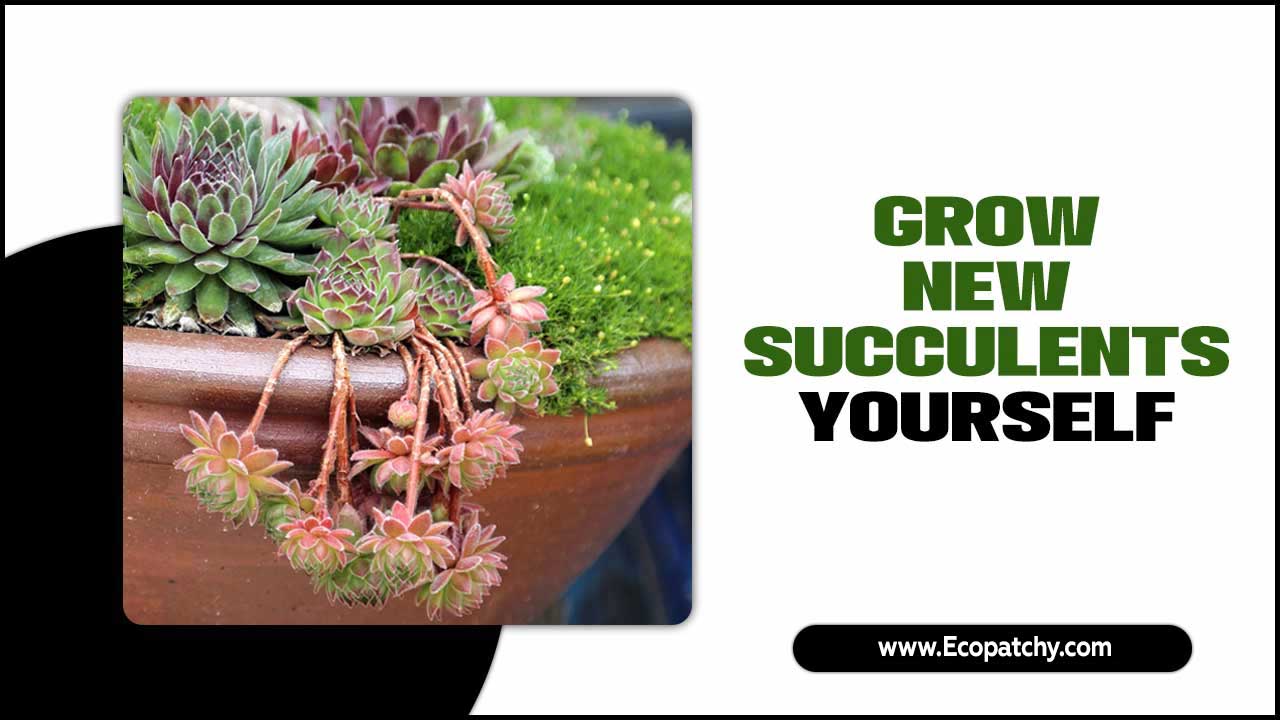
Understanding The Basics Of Succulent Care
Understanding the basics of succulent care is essential for successfully growing new succulents. Succulents are known for their ability to store water in their leaves, which makes them low-maintenance plants. Here are some key points to keep in mind when caring for succulents:
- Light: Succulents thrive in bright, indirect sunlight. Place them near a window or in an area with plenty of natural light.
- Watering: Unlike other houseplants, succulents do not require frequent watering. They prefer dry soil and should only be watered when the top inch of soil feels dry. Overwatering can lead to root rot.
- Soil: Succulents need well-draining soil to prevent waterlogged roots. Use a special succulent or cactus mix, or amend regular potting soil with sand or perlite.
- Temperature: Most succulents prefer warm temperatures between 70-80°F (21-27°C). Avoid exposing them to extreme cold or heat.
- Propagation: Succulents can be easily propagated from stem or leaf cuttings. Allow the cuttings to callous over before planting them in well-draining soil. Following these basic care guidelines, you can enjoy a thriving collection of beautiful and unique succulents in your home or garden.
Choosing The Right Succulents For Propagation
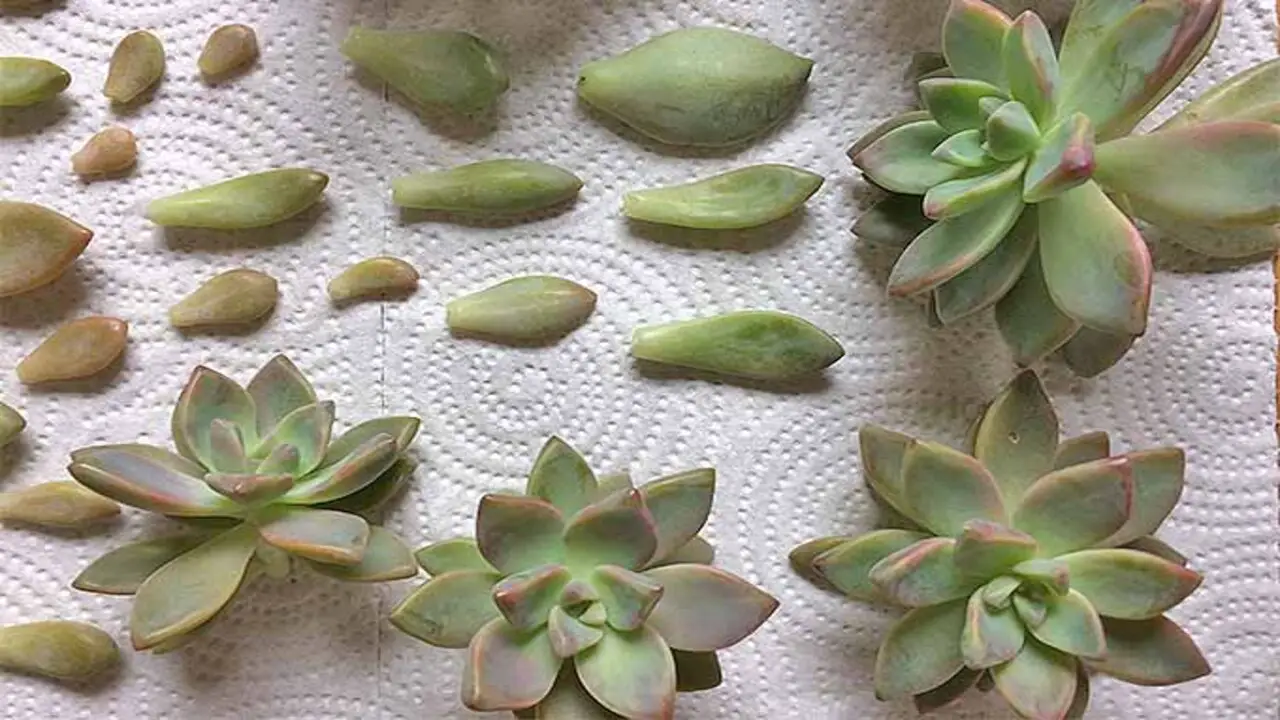
When choosing the right succulents for propagation, several factors must be considered. Some popular succulents for propagation include echeveria, sempervivum, haworthia, and aeonium. It’s important to look for healthy leaves or stems with no signs of damage or disease. Certain succulent varieties, such as sansevieria and aloe, are more suitable for beginners.
Additionally, consider the size and growth habit of the succulent to ensure it will fit in your desired space. Before starting the propagation process, it’s essential to research the specific requirements for each succulent species. By selecting the right succulents for propagation, you can increase your chances of success and enjoy growing new baby plants from your own collection.
5 Essential Tips For Successfully Grow New Succulents Yourself
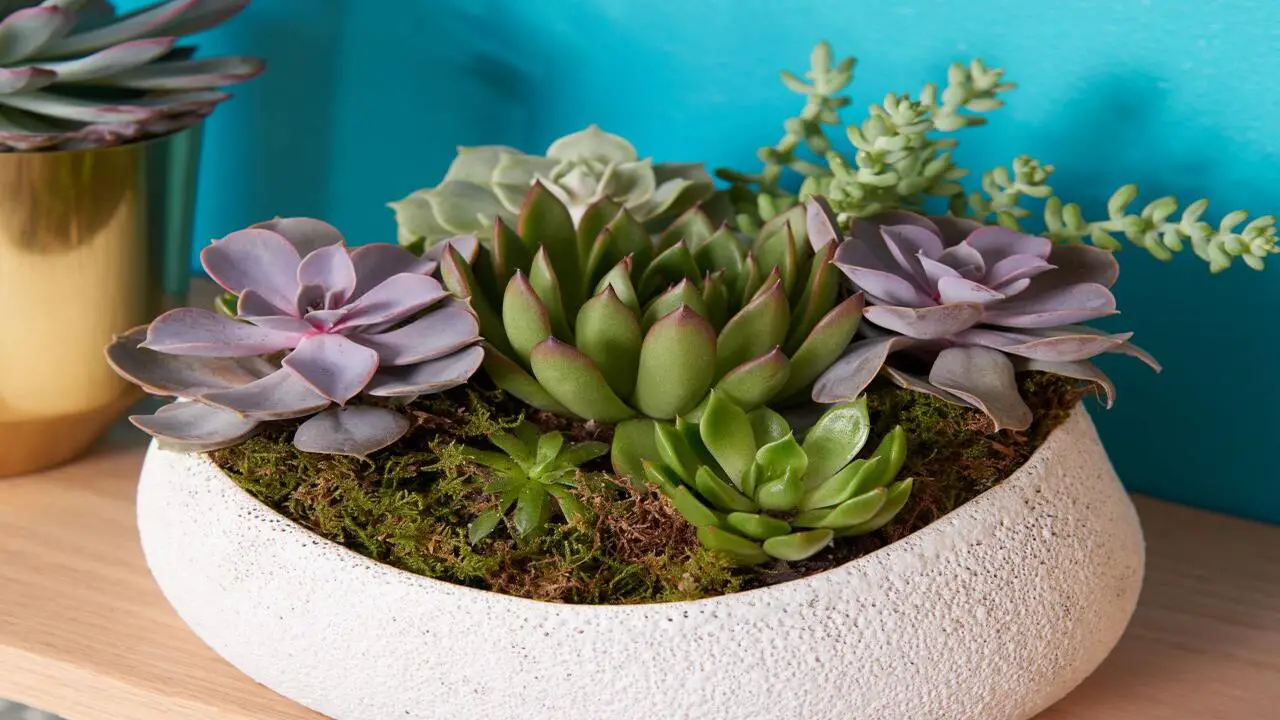
Successfully growing new succulents yourself requires careful attention to their specific needs. One crucial factor to consider is the type of succulent you are working with. Different succulent species have varying light, temperature, and water requirements. To successfully grow new succulents yourself, you should remember five essential tips.
1.Propagation Methods: Leaf, Stem, And Offshoots
When growing new succulents, using these propagation methods, you can multiply your succulent collection and enjoy the satisfaction of growing new plants from existing ones. Remember to provide proper care and attention to your newly propagated succulents to ensure their healthy growth. There are several propagation methods you can try. These include:
- Leaf Propagation: This involves removing a healthy leaf from a mature succulent and placing it on top of well-draining soil. Over time, the leaf will develop roots, and a new plant will grow.
- Stem Propagation: With this method, you can take a stem cutting from a mature succulent and allow it to dry for a few days before planting it in the soil. The cutting will eventually root and form a new plant.
- Offshoot Propagation: Some succulents produce offshoots or “pups” that can be separated from the mother plant and planted independently. These offshoots already have roots and can quickly establish themselves as independent plants.
2.Creating The Ideal Growing Environment For Succulent Propagation
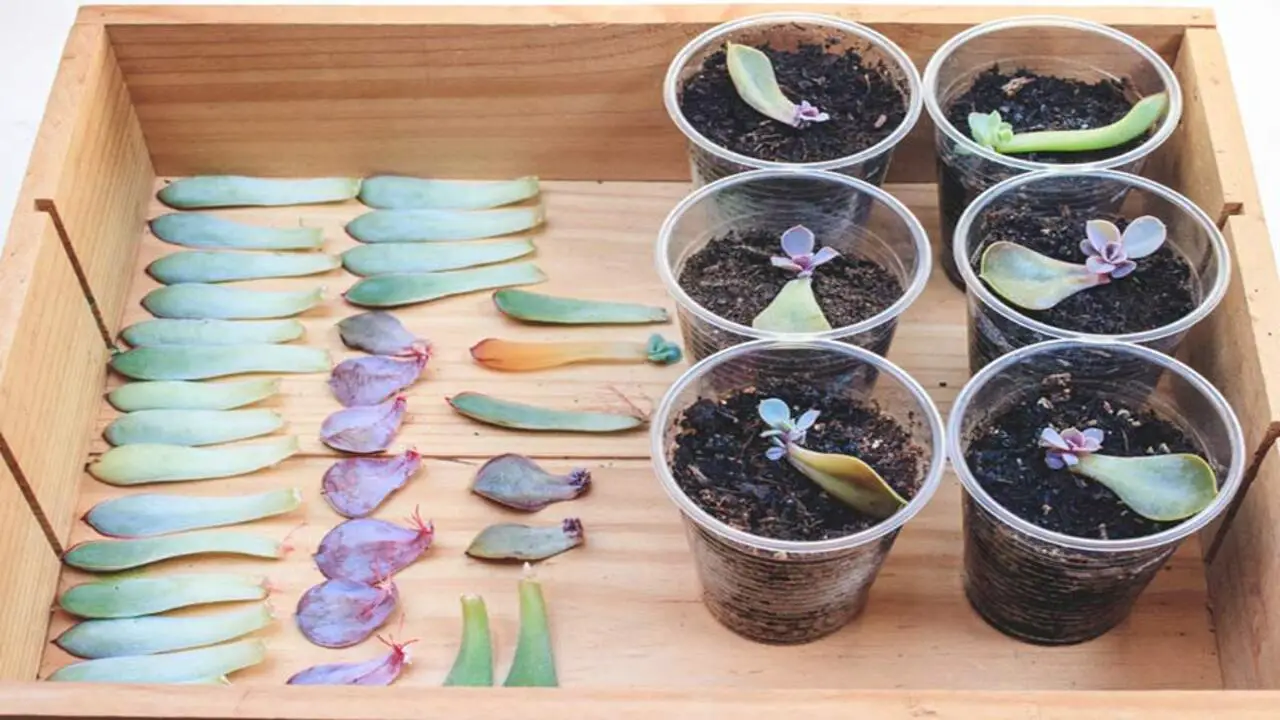
To ensure successful succulent propagation, creating the ideal growing environment is important. Firstly, provide bright, indirect sunlight to promote healthy growth without risking sunburn or dehydration. A well-draining soil mix is also crucial to prevent excess moisture and root rot. Proper air circulation also plays a key role in preventing fungal diseases and encouraging strong growth.
Avoid overwatering by allowing the soil to dry out between waterings completely. Finally, support the nutrient needs of your succulents by using a balanced fertilizer specifically formulated for these resilient plants. By creating the right conditions, you can enjoy the rewarding process of growing new succulents yourself.
3.Proper Watering And Fertilizing Techniques
Proper care and maintenance are crucial for the health and growth of succulents. It’s important to strike the right balance when it comes to watering. Succulents should be watered thoroughly but infrequently, allowing the soil to dry out completely between waterings. This helps prevent overwatering, leading to root rot and other succulent health issues.
Fertilizing is another aspect of succulent care that should be done sparingly. A diluted succulent-specific fertilizer according to the manufacturer’s instructions during the active growing season can support healthy growth and flowering. Remember to adjust your watering and fertilizing practices based on the specific needs of your succulents.
4.Preventing And Treating Common Succulent Problems
To ensure the health and vitality of your succulents, it’s important to be proactive in preventing and treating common problems. One key aspect is monitoring for signs of overwatering, such as yellowing or mushy leaves, and adjusting your watering practices accordingly.
Regularly inspecting your succulents for pests like mealybugs and spider mites is crucial, as prompt treatment can prevent infestations from spreading. Proper air circulation is also essential in preventing fungal diseases like powdery mildew or black rot.
Additionally, addressing issues such as etiolation (stretching) by providing sufficient sunlight and adjusting watering and fertilization practices can help maintain the health of your succulents. Finally, pruning away any diseased or damaged parts of the succulent is necessary to prevent further infection.
5.Patience And Persistence: Nurturing Your Succulents To Maturity

Nurturing your succulents to maturity requires patience and persistence. Succulent growth can be slow, so giving them time to establish roots and develop new leaves is important. Monitor the progress of your propagated succulents and make necessary adjustments to their care routine.
Understand that not all propagated succulents will thrive, but don’t let failures discourage you. Continue learning about succulent care and experimenting with different propagation methods to improve your success rate. Enjoy the journey of nurturing your succulents and watching them grow and flourish over time. Remember, it’s a hobby for many succulent lovers and a great way to appreciate nature’s beauty.
Transplanting Succulents: Tips And Techniques For Successful Repotting
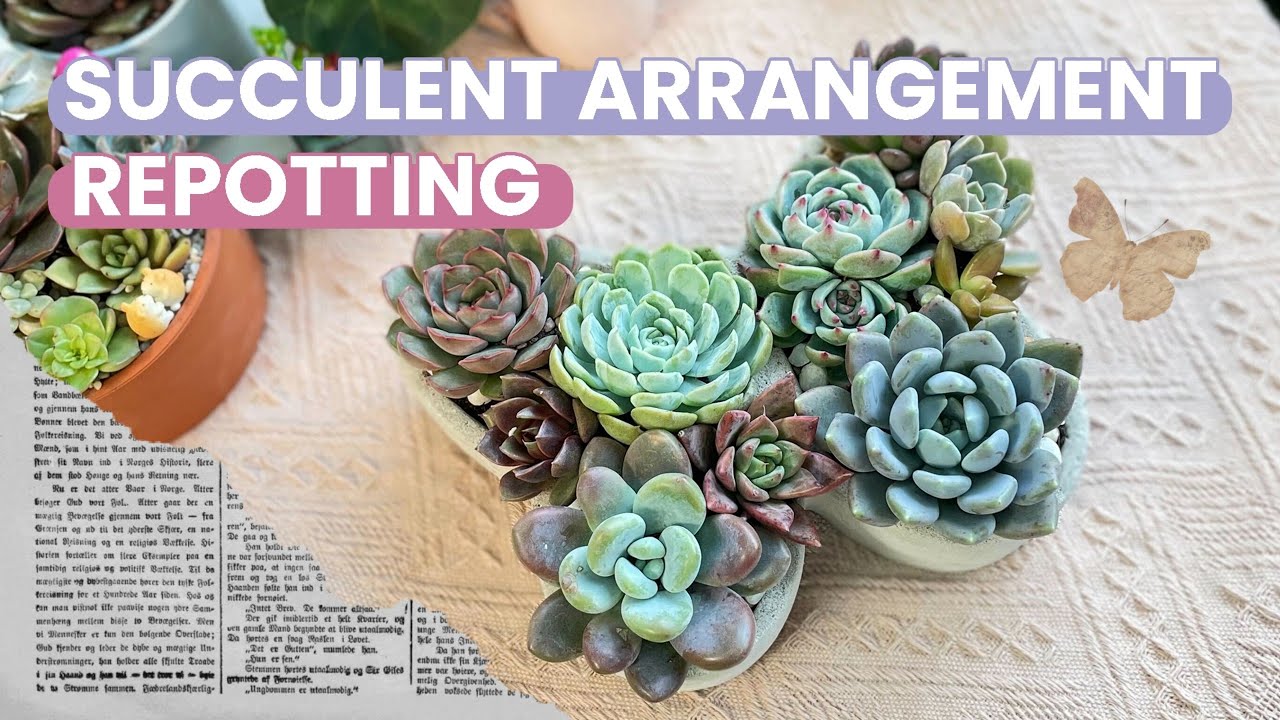
Transplanting succulents is an essential part of their growth and care. Following these tips, you can successfully transplant your succulents and ensure their continued growth and health. Follow these tips and techniques for successful repotting:
- Choose The Right Pot: Select a pot slightly larger than the current one, allowing room for the succulent to grow. Ensure that it has drainage holes to prevent waterlogged soil.
- Prepare The Soil: Use a well-draining soil mix specifically for succulents. Avoid using regular potting soil, as it can hold too much moisture.
- Gently Remove The Succulent: Carefully loosen the soil around the base of the plant and gently lift it out of its current pot. Be cautious not to damage the roots.
- Inspect And Prune: Check for any signs of root rot or pests. Trim any dead or damaged roots with clean, sharp scissors or pruning shears.
- Report The Succulent: Place a layer of fresh soil in the new pot and create a small hole in the center. Lower the succulent into the hole, ensuring it sits at the same level. Fill around the plant with additional soil, gently pressing it down to secure it.
Allow time to adjust: After transplanting, avoid watering your succulent immediately. Give it a few days to adjust to its new environment before resuming normal watering routines.
Caring For Established Succulents: Maintenance And Growth
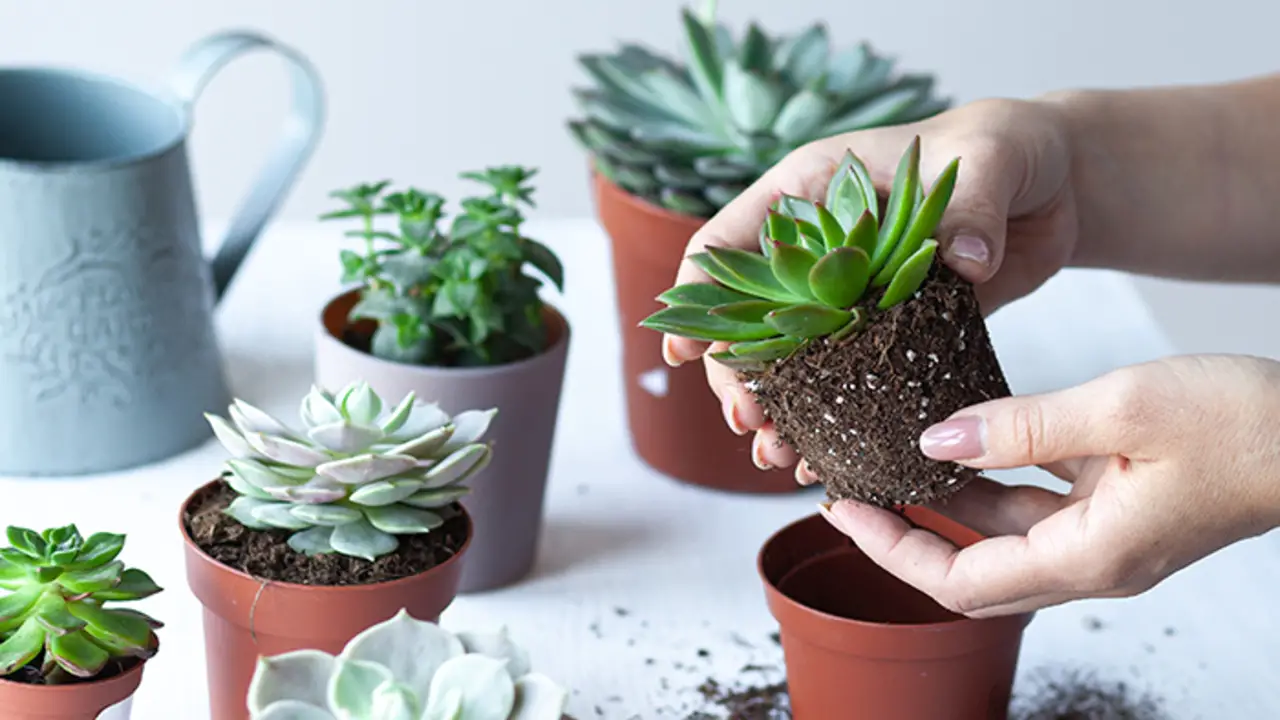
Caring for established succulents is essential to their maintenance and growth. Following these maintenance tips ensures that your established succulents continue to grow and thrive beautifully. Here are some important tips to keep in mind:
- Water Sparingly: Succulents are known for storing water in their leaves, so they don’t need frequent watering. Allow the soil to dry out completely between waterings to prevent root rot.
- Provide Adequate Sunlight: Succulents thrive in bright, indirect sunlight. Place them near a sunny window or outside in a spot that receives partial shade.
- Use Well-Draining Soil: Succulents prefer soil draining quickly and not holding onto excess moisture. Use a cactus or succulent-specific potting mix, or add perlite or sand to regular potting soil for better drainage.
- Avoid Over-Fertilizing: Succulents have low nutrient requirements, so be cautious when fertilizing. Use a diluted, balanced fertilizer once or twice during the growing season.
- Watch For Pests: Common pests like mealybugs and spider mites can infest succulents. Regularly inspect your plants for signs of pests and take appropriate measures to control them if necessary.
Troubleshooting Tips For Sick Or Struggling Succulents
If your succulents look sick or struggling, you can try several troubleshooting tips to help them thrive again. By addressing these common issues and providing the necessary care, you can help nurse your sick or struggling succulents back to health and enjoy their beauty. Here are some common issues and solutions to consider:
- Overwatering: Succulents are drought-tolerant plants and do not require frequent watering. If you notice that the soil is consistently damp or the leaves are becoming mushy, it may be a sign of overwatering. Allow the soil to dry out completely before watering again.
- Underwatering: On the other hand, if your succulent’s leaves appear shriveled or wrinkled, it may be a sign of underwatering. Ensure that you are giving your succulents enough water by thoroughly soaking the soil when you do water and allowing any excess to drain away.
- Lack Of Sunlight: Succulents need bright, indirect sunlight to thrive. If your plants are not receiving enough light, they may become leggy or pale in color. Move them to a location with more sun exposure, or consider using artificial grow lights.
- Poor Drainage: Succulents require well-draining soil to prevent root rot. If your plants are sitting in soggy soil for extended periods, it can lead to various issues. Ensure your pots have drainage holes, and use a well-draining potting mix specifically formulated for succulents.
- Pest Infestation: Succulents like aphids, mealybugs, or spider mites can attract pests. Check your plants regularly for signs of insect activity, such as sticky residue on leaves or visible pests. Treat infestations promptly with appropriate organic pest control methods.
Conclusion
Growing new succulents can be a rewarding and enjoyable experience. By understanding the basics of succulent care and choosing the right succulents for propagation, you can set yourself up for success. Implementing essential tips such as proper propagation methods, creating an ideal growing environment, and practicing proper watering and fertilizing techniques will help your succulents thrive.
Remember to exercise patience and persistence as you nurture your succulents to maturity. Transplanting and caring for established succulents are also important steps in their growth journey.
And if you encounter any issues along the way, troubleshooting tips can help you address them effectively. With these insights and techniques, you’ll be well-equipped to grow new succulents and enjoy the beauty of these plants in your home or garden. We hope you understand grow new succulents yourself.
Frequently Asked Questions
1.Can You Grow A Succulent From A Leaf?
Ans: Yes, it is possible to grow a new succulent from a leaf. Remove a healthy leaf from the parent plant, let it dry out for a few days, and then place it on top of the soil. Lightly water the leaf, and a new plant will sprout from its base over time.
2.What Is The Fastest Way To Root Succulents?
Ans: The fastest way to root succulents is through propagation methods such as stem or leaf cuttings. For stem cuttings, let a healthy stem dry for a day before planting it in well-draining soil. For leaf cuttings, let a healthy leaf dry for a few days before placing it on potting soil. Keep the soil moist but not waterlogged, and provide indirect sunlight until roots and new growth appear.
3.Can Succulent Cuttings Root In Water?
Ans: Succulent cuttings can indeed root in water, but it’s not the most effective method and may lead to rotting. For better success rates, it’s recommended to use well-draining soil or a rooting hormone. Once roots have formed, transplant the cutting into the soil.
4.Can You Grow A Succulent From A Cutting?
Ans: Yes, it is possible to grow a succulent from a cutting. Ensure the cutting is 1-2 inches long and has a few leaves attached. Let it dry for a few days before planting in well-draining soil. Water sparingly and in bright but indirect sunlight until roots and new growth appear.
5.Do I Have To Plant Succulents In The Garden?
Ans: Succulents can thrive both indoors and outdoors. Planting them in containers allows for better control of soil conditions and drainage. Consider the climate and environment when deciding where to plant your succulents – some species are hardy enough for outdoor planting, while others may require indoor care.
